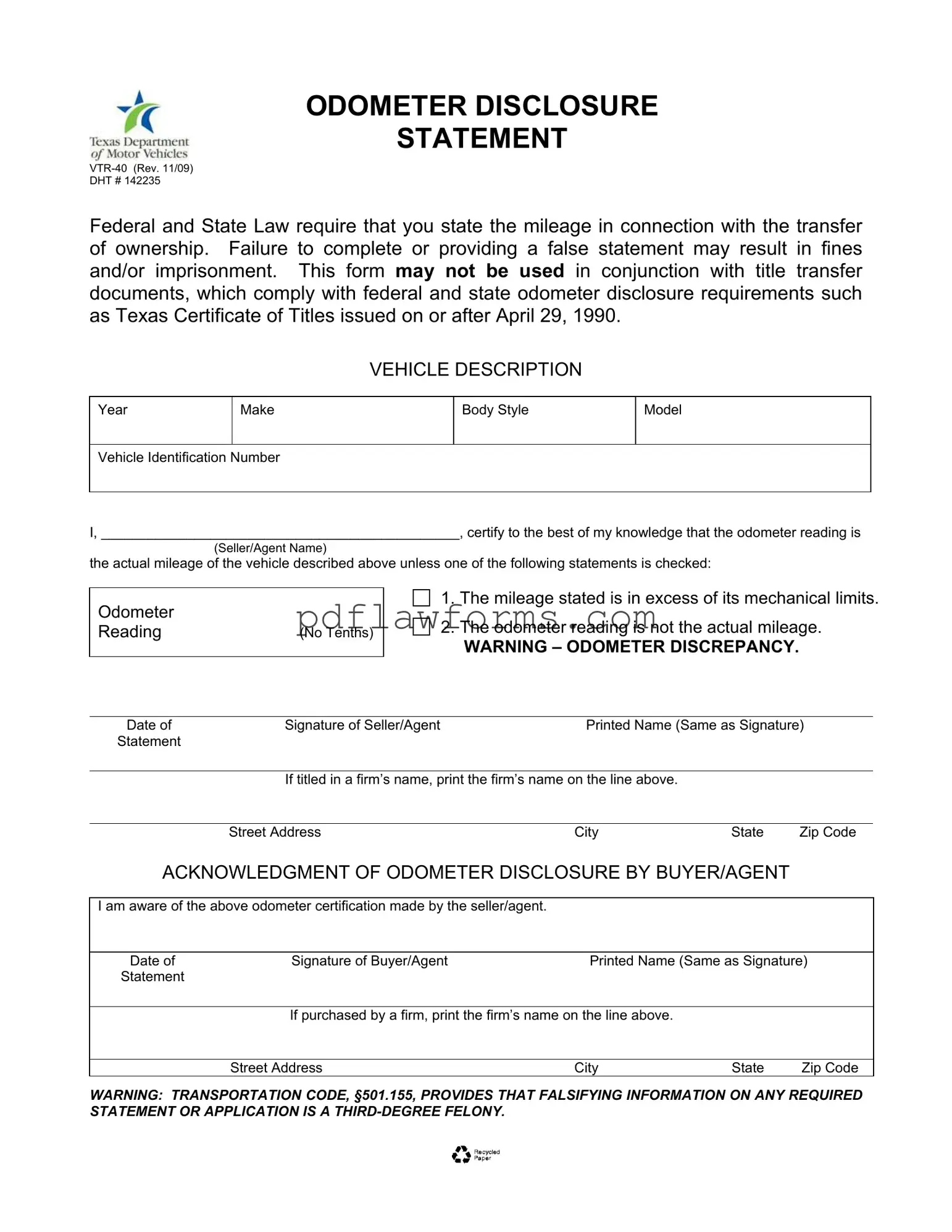The Texas Odometer Statement form, officially known as VTR-40, plays a crucial role in the vehicle transfer process. This document is essential for both sellers and buyers, as it ensures transparency regarding the vehicle's mileage. Under federal and state law, it is mandatory to disclose the odometer reading when ownership is transferred. Failure to provide accurate information can lead to serious consequences, including fines or imprisonment. The form requires specific details about the vehicle, such as its year, make, body style, model, and Vehicle Identification Number (VIN). Additionally, the seller must certify that the odometer reading reflects the actual mileage, unless certain conditions apply, such as the mileage exceeding mechanical limits or the reading being inaccurate. Buyers are also required to acknowledge the odometer disclosure, confirming their awareness of the seller's statements. It is important to note that this form cannot be used alongside title transfer documents that already meet odometer disclosure requirements. Understanding the significance of the Texas Odometer Statement is vital for anyone involved in a vehicle sale, as it safeguards both parties and upholds legal standards.
